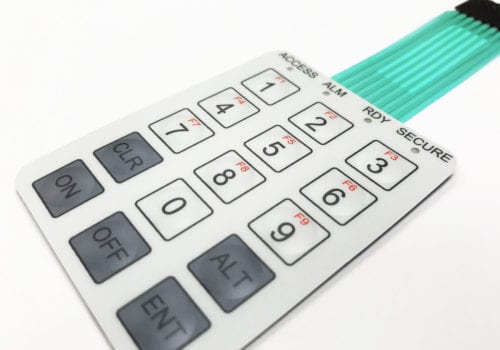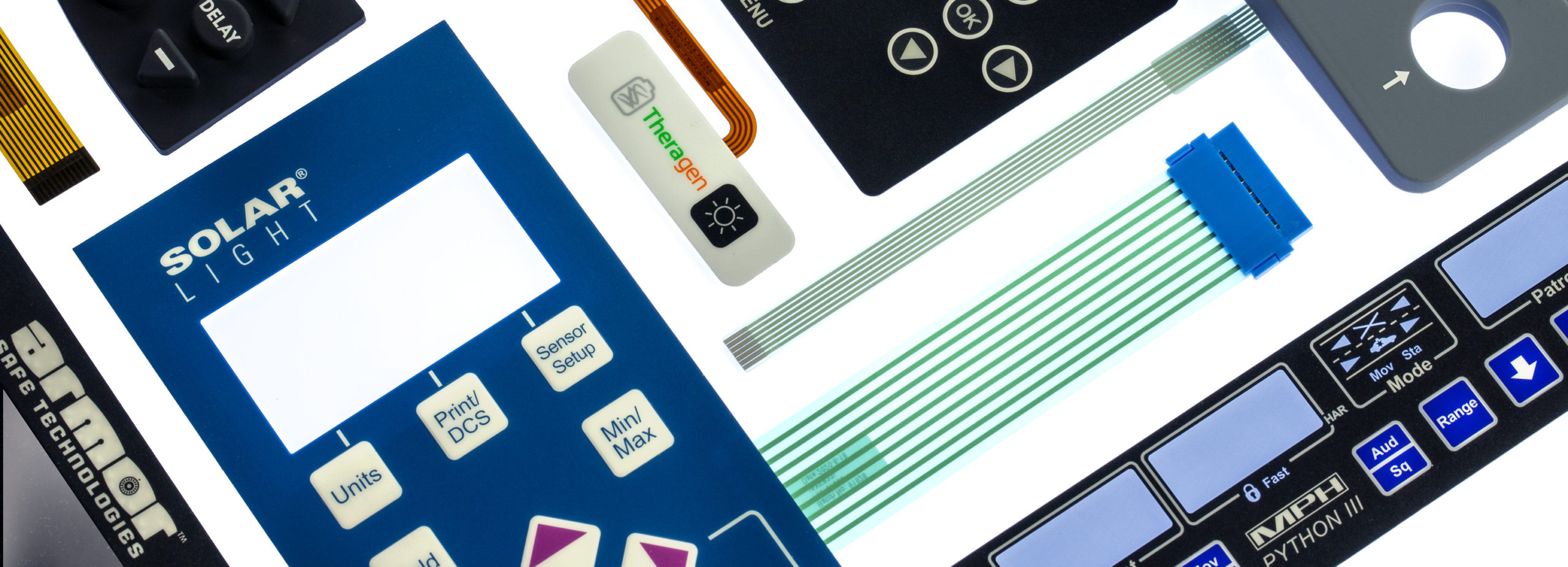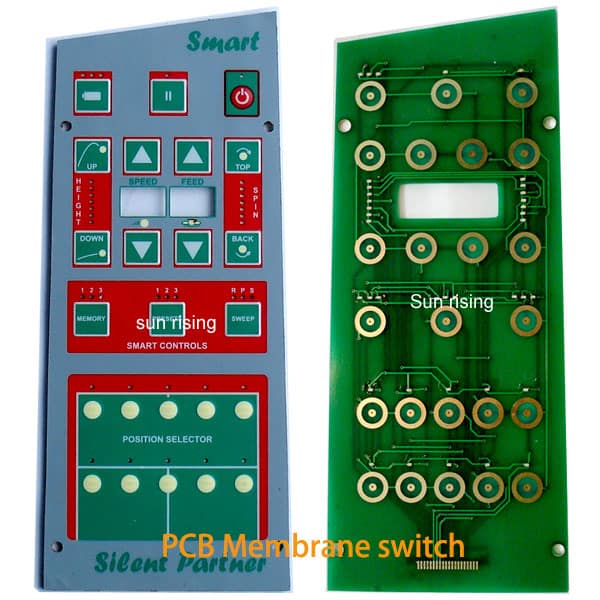Membrane Change Technology: The Trick to Reliable and Economical Interfaces
Membrane layer switch modern technology has become a pivotal part in the design of interface, supplying both integrity and cost-effectiveness throughout a diverse series of applications. Its robust building makes certain resistance to environmental obstacles, while the versatility in style permits tailored options that satisfy details industry needs. As we check out the multifaceted advantages of membrane layer switches, their possibility for development elevates questions about future applications and evolving fads. What does the following phase hold for this innovation in a significantly digital landscape?
Recognizing Membrane Layer Switch Innovation
Membrane switch modern technology is a commonly utilized user interface service in various digital gadgets, supplying a smooth blend of capability and layout. This technology integrates numerous layers of products, typically including a graphic overlay, spacer layer, and a circuit layer. The visuals overlay shows the user interface aspects, while the spacer layer separates the circuit layer from the overlay till a user turns on a switch.
When pressure is put on the overlay, the circuit layer completes the electrical circuit, sending a signal to the device. This system enables various arrangements, including responsive comments and backlighting choices, enhancing user communication. Membrane layer buttons are commonly made utilizing sturdy materials such as polyester or polycarbonate, making sure long life and resistance to ecological variables like moisture and dust.
The versatility of membrane layer changes enables their application in diverse industries, consisting of medical gadgets, customer electronic devices, and commercial controls. Their portable style enables assimilation right into space-constrained settings, supplying a reliable individual interface without compromising aesthetic allure. Recognizing the complexities of membrane layer switch technology is necessary for suppliers and developers seeking to produce trustworthy and reliable human-machine user interfaces.
Trick Benefits of Membrane Buttons
While different interface services exist, membrane layer switches over offer distinctive benefits that make them a recommended option in countless applications. Among the key benefits is their longevity; membrane switches are created to withstand extreme environmental conditions, including moisture, dust, and temperature fluctuations, making certain durable performance. This resilience dramatically lowers the need for constant replacements, therefore decreasing overall maintenance prices.

Furthermore, membrane layer switches are light-weight and small, making them appropriate for applications where area is restricted. Their low-profile design adds to a sleek appearance without compromising functionality.
Cost-effectiveness is additionally a significant benefit, as the manufacturing process for membrane layer changes often tends to be less costly contrasted to standard mechanical buttons. about his This affordability, incorporated with their dependability and convenience of installment, settings membrane layer changes as a functional service for a vast variety of industries looking for efficient and efficient interface.
Applications Across Various Industries
How do membrane layer buttons adapt to the diverse requirements of various sectors? Membrane switch innovation is increasingly acknowledged for its flexibility, making it suitable for a variety of applications across numerous industries. In the clinical area, membrane buttons are utilized in diagnostic tools and individual surveillance devices, where their durability and ease click this of cleaning are important for keeping hygiene standards. The automotive sector utilizes these switches in dashboards and control board, offering a structured aesthetic while making sure user-friendly procedure.
In customer electronic devices, membrane layer buttons provide a portable remedy for remote controls and home appliances, improving customer experience through user-friendly style. In addition, the commercial field leverages membrane switches for machinery control board, gaining from their resistance to severe atmospheres, such as wetness and dirt.
Army and aerospace applications also use membrane buttons for their reliability and ability to hold up against severe problems, ensuring operational efficiency in critical circumstances. The food and beverage sector adopts these switches for automated systems, where cleanliness and ease of procedure are extremely important (membrane switch). Eventually, membrane buttons are tailored to meet the unique needs of each industry, proving their essential function in contemporary innovation interfaces
Style and Personalization Alternatives

In the realm of membrane layer switch technology, style and modification options play an essential duty in enhancing performance and user interaction. These buttons can be customized to fulfill details operational requirements and visual choices, making them functional parts in numerous applications.
Among the key personalization choices is the design of the switch itself, which can be developed to fit unique interface and ergonomic factors to consider. By readjusting the shape, size, and arrangement of switches, manufacturers can create intuitive designs that facilitate ease of usage. In addition, the unification of various colors and visuals overlays enables for branding and improved presence, making certain that customers can promptly identify features.
In addition, membrane layer switches can be crafted with special info different tactile responses mechanisms, such as raised switches or audible clicks, to boost the individual experience. Various materials can additionally be chosen for longevity and environmental resistance, addressing aspects such as moisture, temperature level fluctuations, and chemical exposure.
Inevitably, the comprehensive layout and customization alternatives offered in membrane switch technology equip services to create customized options that not only meet practical demands but likewise straighten with their branding and functional needs.

Future Fads in Membrane Layer Buttons
As membrane layer switch innovation remains to advance, future trends are increasingly concentrated on enhancing individual experience and integrating innovative performances. One substantial pattern is the assimilation of touch-sensitive and capacitive technologies into typical membrane buttons. This growth permits even more user-friendly individual interfaces, giving tactile feedback while keeping a sleek style.
One more arising trend is making use of eco friendly materials, driven by the expanding need for lasting manufacturing practices. Manufacturers are seeking to lower their carbon impact by making use of recyclable substrates and low-impact inks, lining up with worldwide sustainability goals.
In addition, the increase of the Internet of Things (IoT) is triggering the consolidation of smart features into membrane layer switches. Improved connection choices will certainly make it possible for tools to interact with each various other, enabling seamless assimilation right into more comprehensive systems.
Additionally, innovations in printing technologies, such as electronic printing, are permitting better layout adaptability and modification. This allows makers to create elaborate styles and dynamic colors cost-effectively.

Verdict
In verdict, membrane button technology stands for an important development in customer interface design, offering significant advantages in longevity, personalization, and cost-effectiveness. As innovations continue to emerge, especially in touch-sensitive interfaces and sustainable materials, the potential for membrane switches to improve customer experience and performance continues to be encouraging.